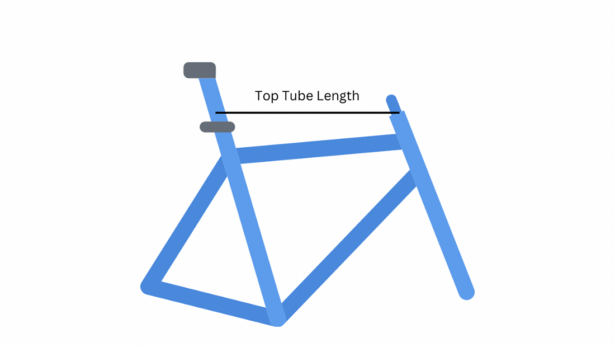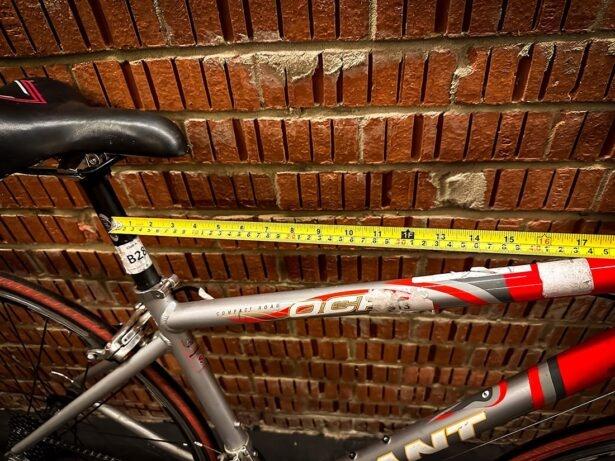Having cycling as a hobby is great. It is going out riding, working on bikes, and making many new friends. Typically when buying a new bike, all the information is there ready for you, and it’s easy to know what size the frame is going to be and if it will fit you.
Let’s say you’re buying the bike secondhand. This isn’t always the same story.
As someone who has bought a lot of secondhand bikes, I often struggle to determine what size a bike frame is. I have been lucky enough to learn some great ways to find the correct size, and in this article, I’m going to tell you the easiest ways.
Why does frame size matter?
Before we start, it’s important to speak about why having the correct frame size is so important to the cycling experience.
Comfort
The first reason you are going to want the correct size frame is to get as comfortable as possible. If the frame is too big, then you’re going to be really stretched out. If the frame is too small, you will be crunched up on the bike.
Injury Prevention
Using the wrong frame is going to cause you to get injured. It will eventually catch up with you if you can’t get the correct saddle height, reach, or stack height. You need to get the right size to stop unwanted injuries and issues.
 Performance
Performance
Bike frames are designed to give you the best possible performance possible. If you are on a frame too small, the handling will feel snappy.
If you are on a frame too large, it will feel unresponsive. The right size frame changes the way the bike will feel.
Methods for finding the correct frame size
Here are the methods I personally use when it comes to finding the frame size to ensure it’s correct.
 Method One: Look for the size
Method One: Look for the size
The first and easiest way is to look for the frame size. On many bikes, you will find a small sticker, or it will be imprinted on the frame.
You will typically find it on the seat tube. It will generally give you inches on mountain bikes, and on road bikes, it will be in centimeters. If you’re lucky, it will say small, medium, or large.
Method Two: Measure the Top Tube

Next, you can measure the size yourself. For this, you will need a tape measure.
We will run through the process of using the most common measurement, the top tube measurement. This is what you will commonly measure a road bike with.
Take the tape measure, place it from the center of the seat post and send it directly across to the center of the head tube as pictured below. This will be the top tube measurement. Remember, it has to be horizontally across.
Method Three: Measure the Seat Tube
The next method is to measure the seat tube. This is simpler than the top tube and is what you will generally do when measuring a mountain bike. This is typically measured in inches, and a tape measure will work fine.
Take the measuring tape to the center of the bottom bracket and ensure it sits in the center of the crank. Then take it all the way up to the seat where the top tube crosses.
This is the center measurement. If you take it to where the seat tube collar is, that’s the top measurement.
Not all bikes are the same
One thing that’s important to understand is not all bikes are the same. Bikes come in shapes and sizes and, because of this, have different dimensions.
Mountain bikes are generally measured in inches, and road bikes are measured in cm, sometimes even in different places. That size you get doesn’t always tell you who it’s for.
A good example is you could have a road bike that is 53cm on the top tube and be designed for a rider of 5ft 7” to 5ft 11”. A 53cm bike from another brand could be made to suit a rider of 5ft 4” to 5ft 7”. This is why it can get complicated.
General Sizing
We are often asked at Bike Test Reviews about what size bike you should be riding when looking for a bike. Well, this is a general size guide.
Although bikes come in more sizes and different shapes, this is a great chart to give you a rough estimation of where you should be on a fairly standard bike.
Road Bike Sizing Chart
| Size | Road Sizing | Rider Height |
| XXS | 46cm | 4ft 10” |
| X Small | 48cm | 5ft |
| Small | 52cm | 5ft 3” |
| S/M | 53cm | 5ft 6” |
| Medium | 54/55cm | 5ft 9” |
| M/L | 56cm | 5ft 11” |
| Large | 57cm | 6ft |
| X Large | 60cm | 6ft 3” |
| XXL | 62cm | 6ft 5” |
Mountain Bike Size Chart
| Size | MTB Sizing | Rider Height |
| XXS | 14” | 4ft 10” |
| X Small | 15” | 5ft |
| Small | 16” | 5ft 3” |
| S/M | 16.5” | 5ft 6” |
| Medium | 17” | 5ft 9” |
| M/L | 17.5” | 5ft 11” |
| Large | 18” | 6ft |
| X Large | 20” | 6ft 3” |
| XXL | 21” | 6ft 5” |
Obviously, so many bikes come in a huge amount of different designs, so this can only be used as a rough guide.
Conclusion
Now you know how to measure a bike’s frame size. Many other measurements can be done, but the top and seat tube are the ones we would highly recommend.
We hope you enjoyed our article and are ready with your tape measure when looking at another bike to buy.

Robbie Ferri has spent years working in a bike shop, has worked with industry leading brands on product creation, has been a semi pro athlete, and is a fully qualified strength and conditioning coach. He has broken World Records, bikepacked all over the World and raced ultra distance at a top-level.






